On June 26, 2023, the Brookings Institution launched the ninth version of its online presence—brookings.edu—that debuted in May 1995. “Millions of people turn to the Brookings website each year for trusted information,” said Andrea Risotto, chief communications officer at Brookings. “With this new website, we aimed to create a new kind of digital engagement platform to make sure people can engage with us on vital policy matters and access the resources and tools they need.”
Our website has evolved over the last 28 years to meet the changing needs of policymakers, journalists, philanthropists, academics, and leaders around the world. As we celebrate this new incarnation of brookings.edu, here’s a look back on where we’ve been, highlighting just how far we’ve come.
Our First Website
Brookings’s first website was launched by our Information Technology Services department on May 18, 1995, just a few years after the launch of the first public websites, and two years after introduction of Mosaic, one of the first web browsers. The early Brookings website, then found at the fashionably short URL “brook.edu,” shows all the then-current conventions in web presentation, including visible table borders to make a tile, “Hot Topics” with fiery {HOT} icons, and heavy use of exclamation marks. It was coded completely in HTML and served by Brookings’s servers.
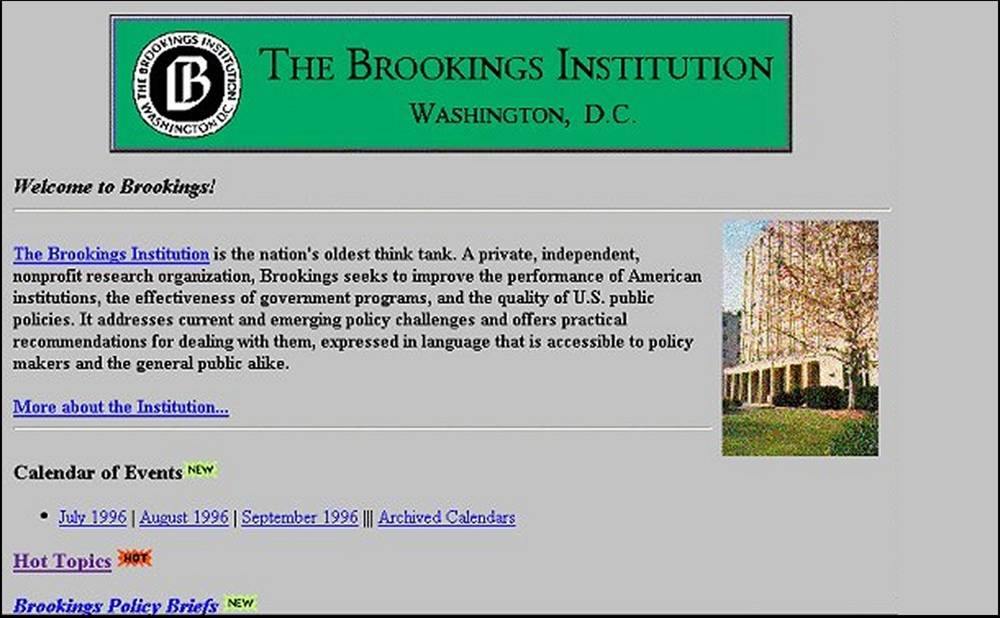
Search this site!
Our first website redesign in 1997 was a modest update to the original. The gray background disappeared, an image of the building on Massachusetts Avenue appeared, and a primitive search engine debuted that was heralded by the call to action, “Search this site!” The site was still largely managed by the IT department, but in collaboration with “web coordinators” in Brookings’s research programs.
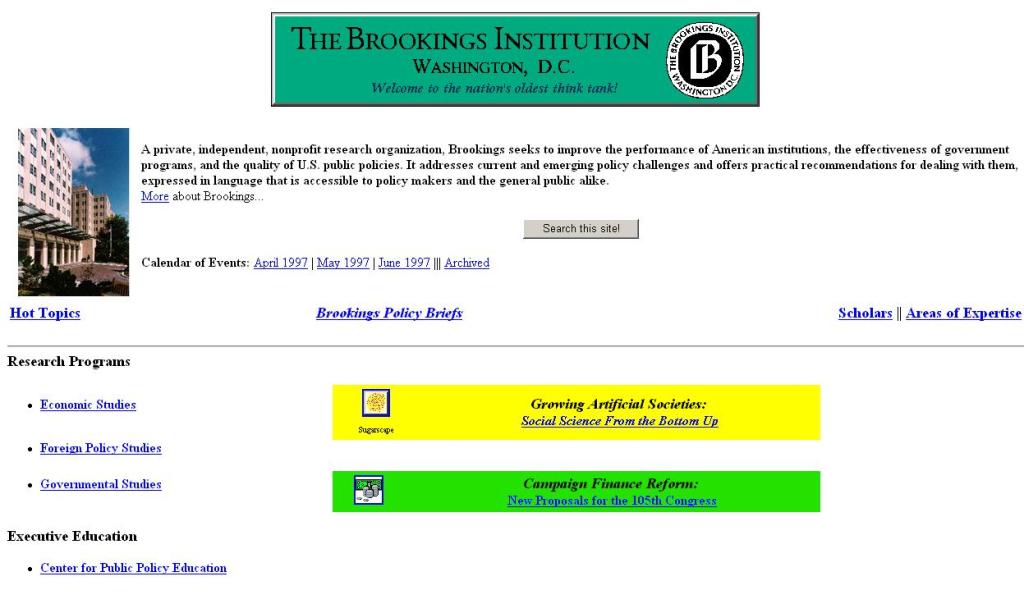
Our First Redesign
On October 28, 1998, we launched the first comprehensive redesign of brookings.edu. The new layout featured more home page links, photos, an updated logo treatment (no more green), and a random collage image pulled from pieces of cover art used in The Brookings Review, a quarterly magazine that ended publication in 2003. The web team was particularly excited about the automated date feature underneath the collage. The top navigation bar, however, was a static image that used an image map for links.
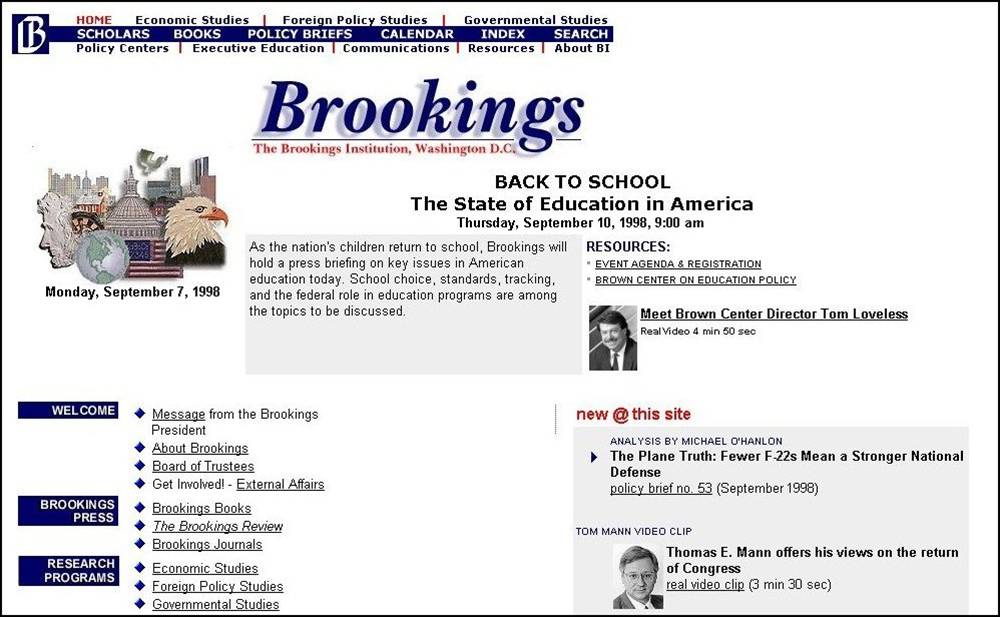
No More Coding
By the fall of 1999, management of the Brookings website had shifted from a webmaster in the IT department model to a partnership between the Central Communications and IT departments. The launch of the new site in September featured even more home page links in both top and side bars, a larger brand logo, an even larger collage, and lots of red circle icons. Now, the top and left nav bars throughout the site were static images that used image maps for the links. In 2002, a content management system was first introduced for the site, meaning no more hand-coding every web page.
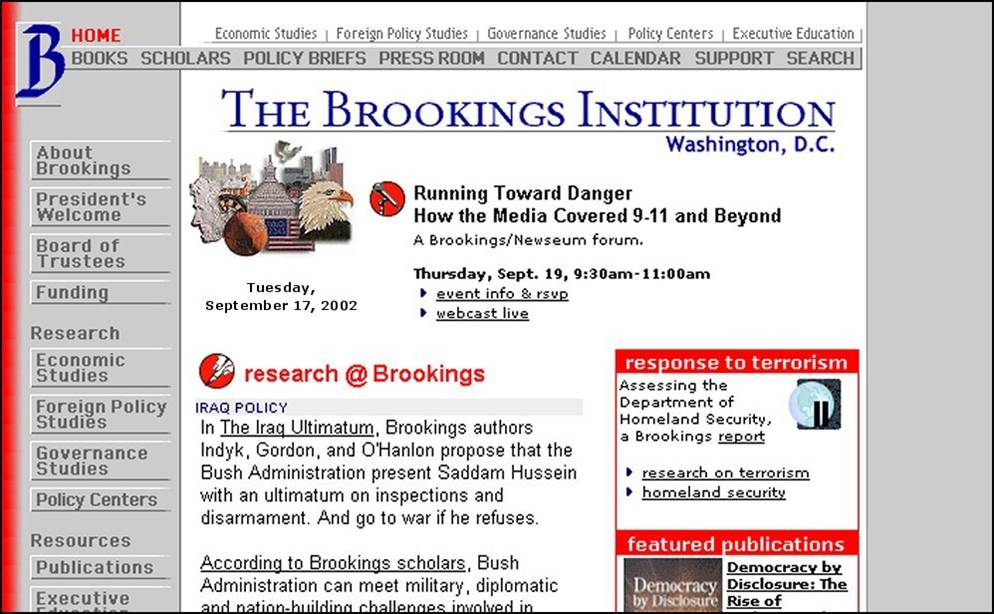
New Navigation Options
As web technology and conventions changed, so did our home page. The website that launched in February 2003, designed in partnership with DaniloBlack, featured a dynamic set of options in the left navigation (no more static images!), no top navigation, and a prominent search box, not just a link. If you look very closely at the banner image’s upper right corner, you’ll see a tall fellow on the left side walking into the Brookings building—it’s this author, in an entirely staged picture.
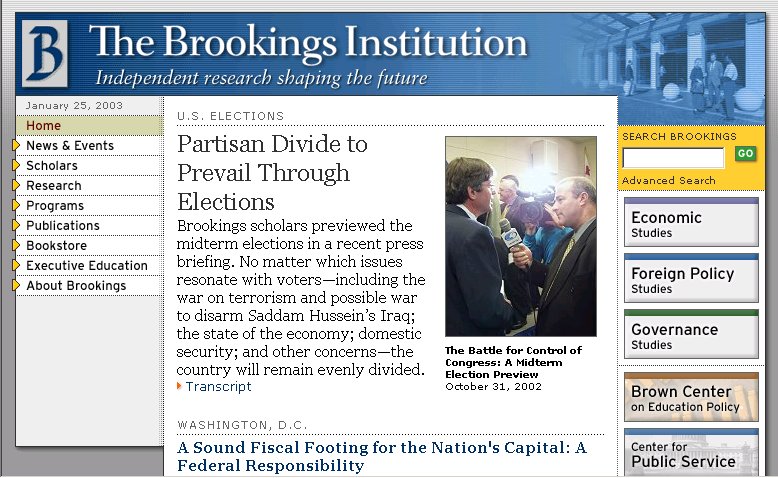
Blogs, Podcasts, and Social Media
In October 2007, our new site featured a slimmed-down side nav, journalistic photography, and the first appearance of the Brookings motto, “Quality, Independence, Impact.” This website version also supported new features during its life cycle, including multimedia, podcasts, RSS, blogs, social media channels, and multi-lingual content. Our partners for design, strategy, and technology were Threespot Media and Velir, and the new CMS platform was Sitecore.
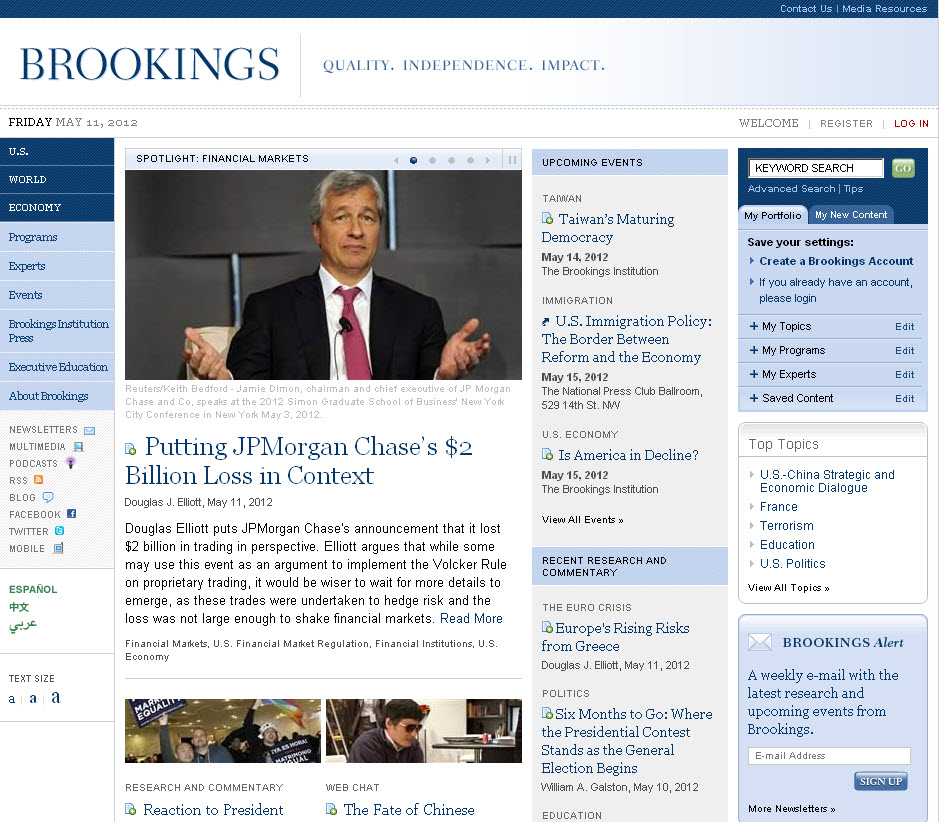
Support Brookings
In May 2012, Brookings launched the seventh design of the site. It featured a slimmed-down navigation, abandoning the ubiquitous left nav for only a top nav bar, and also adopted the “hero image” style for the home page, as seen with the May 2015 Brookings Essay by Chrystia Freeland. The navigation and home page presentation were simplified to help visitors find what they needed more quickly, and a prominent “Support Brookings” link was added to the site nav.
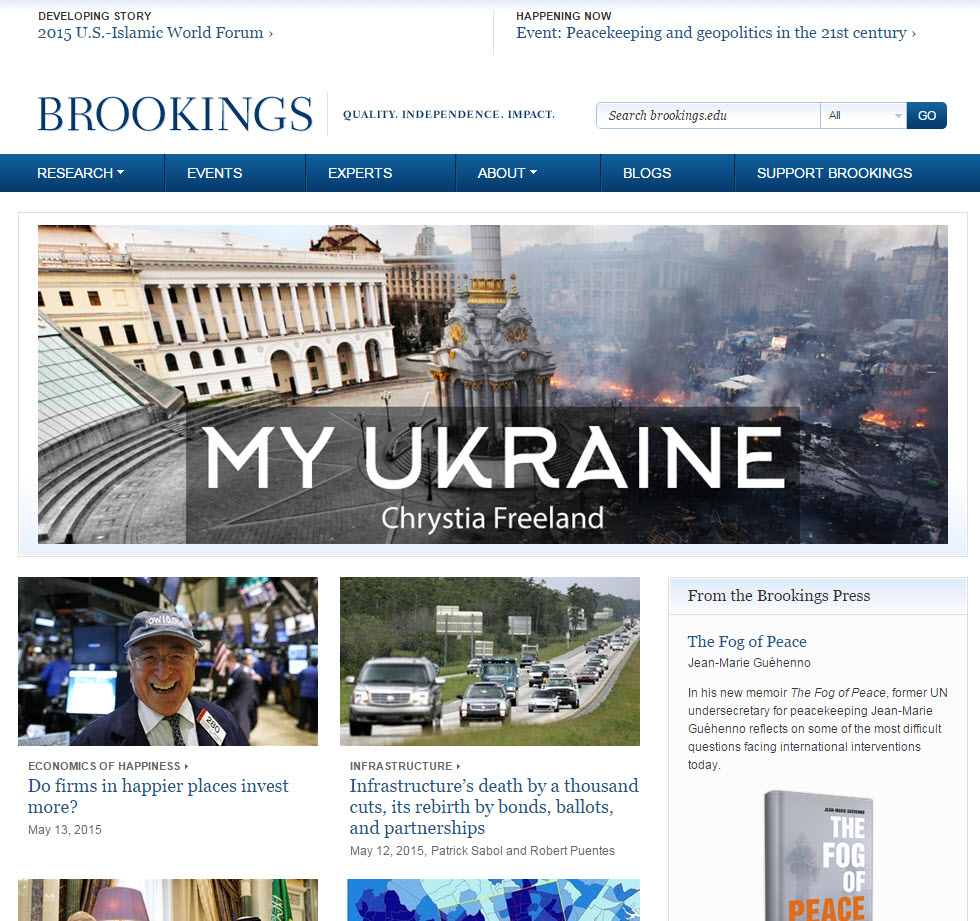
Welcome to WordPress
The eighth iteration of brookings.edu launched in August 2016. Its design and functionality aimed to maximize visitors’ ability to find, read, and share research and commentary. In post-launch analysis, we determined that compared to the previous version of the site, visitors were staying longer and engaging more. The partner for this redesign was Alley Interactive, and a new CMS was implemented: WordPress.
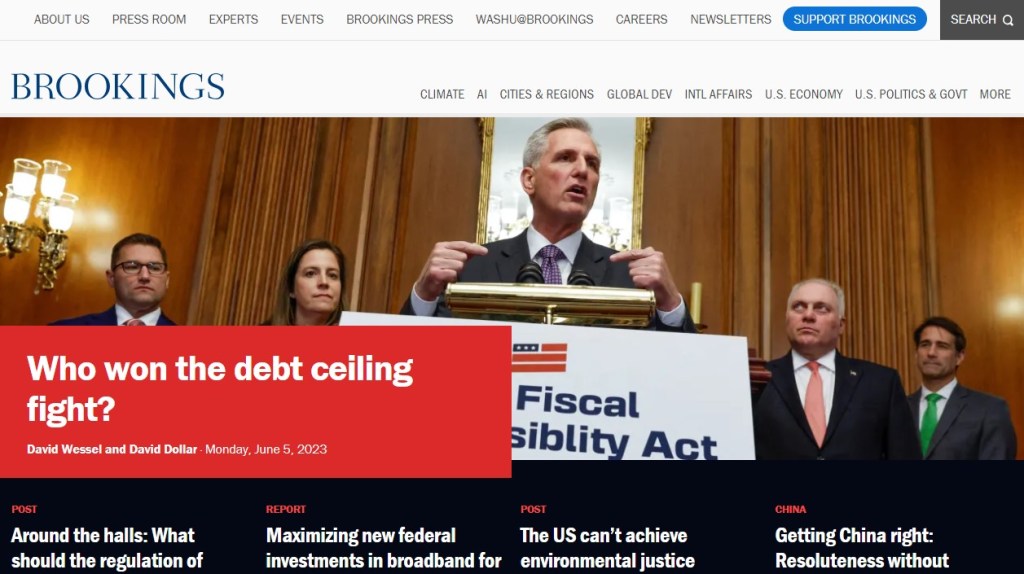
Robust, User-Friendly Search
The new brookings.edu, as always, aims to make it easy to access high-quality, independent research and commentary on a wide range of important topics. Developed in partnership with Teal Media, the website features a robust new search function, enabling visitors to explore the latest Brookings research, analysis, and recommendations by topic or expert. Visitors can delve into reports, policy briefs, podcasts, videos, and testimony, and easily subscribe to newsletters, explore job and internship openings, and donate to support the Brookings Institution’s work. WordPress remains the content management tool.
Amy Liu, interim president of the Brookings Institution, expressed her enthusiasm about the launch, stating, “At Brookings, we aim to empower people, communities, and decisionmakers to take informed action on pressing challenges confronting society today. With this enhanced website, we are pleased to be able to make our wide range of trends analyses, original insights, and policy recommendations more user-friendly and accessible to our global audience. This website represents the institution’s steadfast commitment to providing rigorous research and innovative ideas to make the world a better place.”
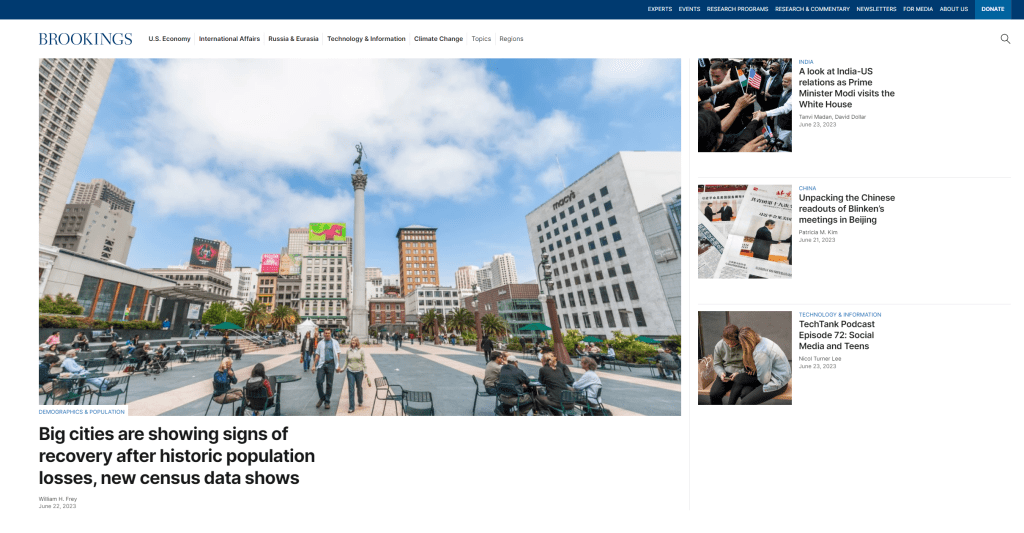

Commentary
Pixels and progress: The evolution of brookings.edu since 1995
June 27, 2023